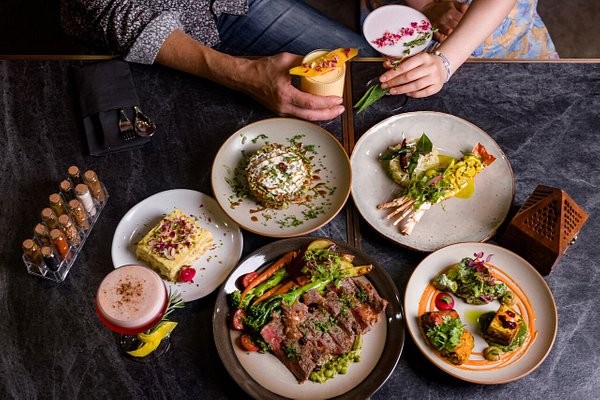Everything You Need to Know About Çeciir

If you’ve ever come across the word çeciir and wondered what it is, you’re in for a treat. Whether you’re a foodie, a history buff, or just curious about cultural traditions, this article is your one-stop guide to understanding everything about çeciir. We’ll explore its origins, cultural role, preparation methods, and answer some of the most common questions. By the end, you’ll be well on your way to becoming a true çeciir expert.
What Is Çeciir?
Çeciir is a beloved traditional Turkish stew made primarily from chickpeas, onion, garlic, and tomato paste. The simplicity of its ingredients belies the richness of its flavor. Originating in southern Turkey, çeciir has gained popularity throughout the country and beyond.
The cooking process begins with soaking dried chickpeas overnight. These are then simmered slowly with olive oil, tomato paste, onions, garlic, and broth. Common spices include cumin, red pepper flakes, oregano, and bay leaves. This long, slow simmering process allows the flavors to meld beautifully, resulting in a thick, comforting stew.
Often served warm, çeciir is typically enjoyed with rice or bread to soak up its flavorful sauce. It’s also common to see it topped with parsley, lemon juice, and paprika. Some enjoy it with a dollop of yogurt or crumbled feta cheese for extra richness.
Not only is çeciir hearty and satisfying, but it’s also vegetarian, gluten-free, and full of plant-based protein. It’s no wonder this timeless dish continues to win over hearts around the globe.
Origins and History of Çeciir
The term çeciir also refers to a historic board game that originated in Central Asia around 600 AD. Archaeological evidence from ancient Persia shows early versions of çeciir boards and playing pieces. The game traveled through trade routes, eventually finding its way into the Middle East, Eastern Europe, and Russia by the 1600s.
The rules are straightforward: players aim to capture each other’s pieces by landing on them, using moves determined by dice or knucklebone throws. Despite its simplicity, the game requires both strategy and luck, making it a compelling pastime.
Over time, çeciir sets evolved into beautiful works of art. Nobles and royals often commissioned luxurious versions crafted from marble, jade, or rare woods. Today, antique sets of çeciir are considered valuable cultural artifacts.
In recent years, çeciir has experienced a resurgence, especially through international competitions and gaming clubs that continue to celebrate this ancient form of entertainment.
How Çeciir Is Made
In another cultural context, çeciir refers to a traditional Turkish street food made from chickpea flour. This version is prepared quite differently from the stew but remains deeply rooted in Turkish culinary culture.
The process begins by mixing chickpea flour with water and a bit of salt to form a smooth dough. After kneading for about 10 minutes, the dough is allowed to rest for half an hour. It is then rolled out thinly and cut into various shapes like diamonds or strips.
These pieces can be:
- Boiled: Cooked in water until they float, then tossed in olive oil or butter.
- Fried: Deep-fried until golden brown and crisp.
- Baked: Baked in the oven until they are lightly browned.
Toppings vary but often include garlic yogurt sauce, chili oil, crushed red pepper, and herbs like oregano or mint. Çeciir is enjoyed warm or at room temperature and is easy to store for later use.
Cultural Significance of Çeciir
In Central Asian and Turkish traditions, çeciir is more than just food or a game—it’s a cultural cornerstone.
Community Bonding
Preparing çeciir is often a communal activity. Families and neighbors gather to cook together, making the process a time for conversation, laughter, and storytelling. Shared meals reinforce community ties and promote a sense of belonging.
Hospitality
Serving çeciir to guests is a long-standing symbol of generosity. Hosts proudly offer the dish as a gesture of warmth and welcome. In some communities, turning down a bowl of çeciir may even be considered impolite.
Pride in Tradition
Every family has its unique take on çeciir. Recipes are passed down through generations, with each cook adding their own touch. This personal connection to a widely loved dish creates a strong sense of heritage and identity.
Çeciir FAQs
What exactly is çeciir?
Çeciir is a Turkish dish made of chickpeas simmered with onions, garlic, tomato paste, olive oil, and spices. It’s a hearty, vegetarian-friendly stew often enjoyed with rice or bread.
How is çeciir pronounced?
The word çeciir is pronounced “cheh-CHEER.” The Turkish letter “ç” is pronounced like “ch” in “chop,” and the double “i” sounds like “ear.”
What spices are in çeciir?
The most common spices used in çeciir include:
- Cumin for an earthy depth
- Paprika for a smoky kick
- Oregano for herbal flavor
- Black pepper and salt to enhance the overall taste
What ingredients do I need to make çeciir?
To prepare traditional çeciir, gather the following:
- Dried chickpeas
- Olive oil
- Onion
- Garlic
- Tomato paste
- Spices (cumin, paprika, oregano, salt, pepper)
- Optional: lemon juice and parsley for garnish
What do you serve with çeciir?
Çeciir goes well with:
- Rice or bulgur
- Flatbreads like pita or lavash
- Fresh salads
- Grilled meats
- Yogurt or yogurt-based dips
Final Thoughts
Çeciir is a multifaceted gem of Turkish and Central Asian culture. Whether enjoyed as a flavorful stew, prepared as a chickpea-based snack, or played as a centuries-old board game, it embodies a unique blend of tradition, flavor, and community spirit.
Now that you know all about çeciir, why not try making it yourself? It might take a few tries to perfect the recipe, but the result is well worth the effort. So, gather your ingredients, embrace the tradition, and enjoy every savory bite of this cultural favorite.
Read also: “How to Find FOK959S-M Model for Better Sleep”
